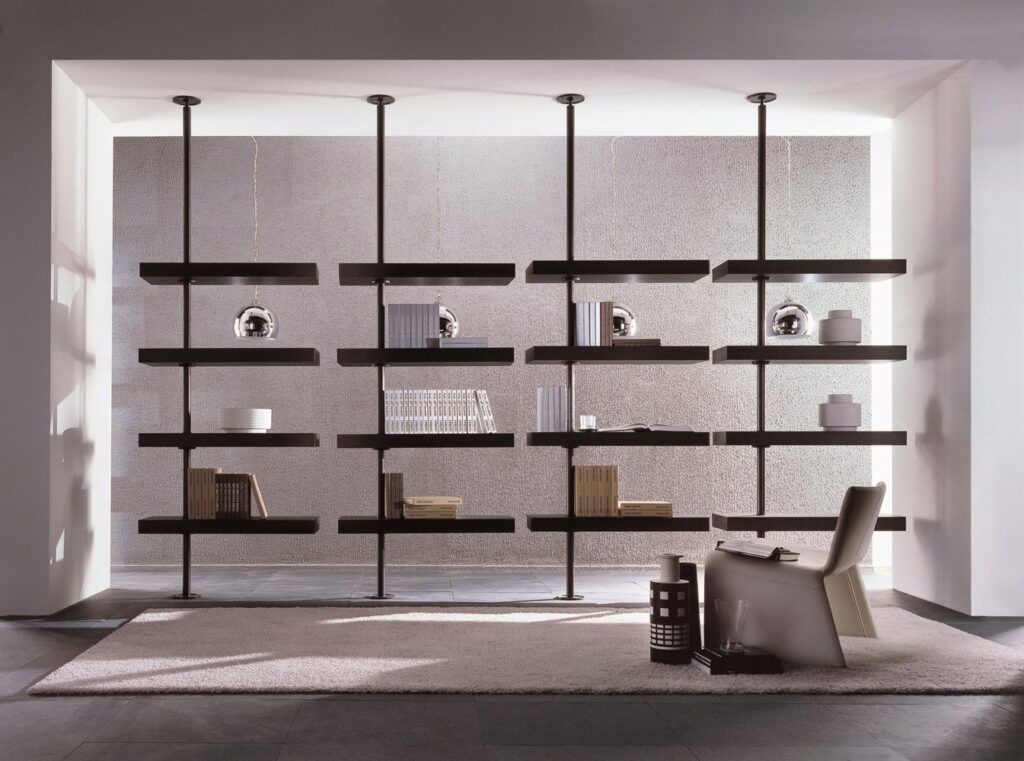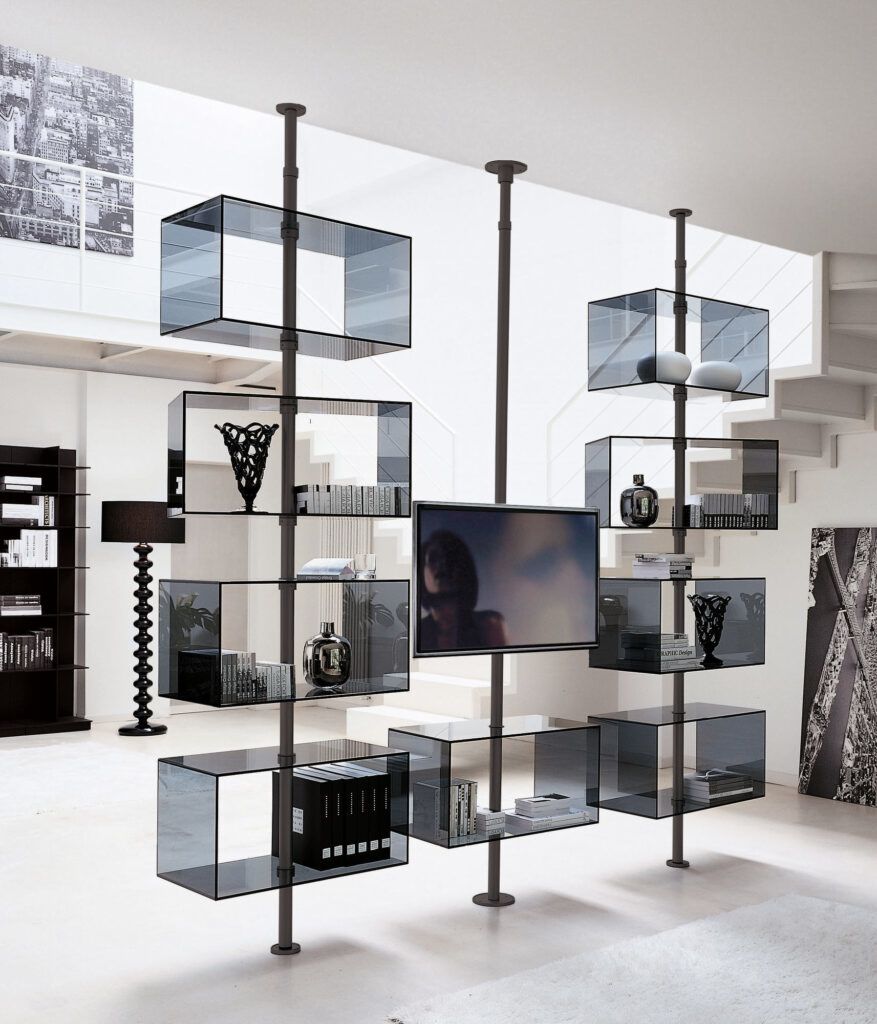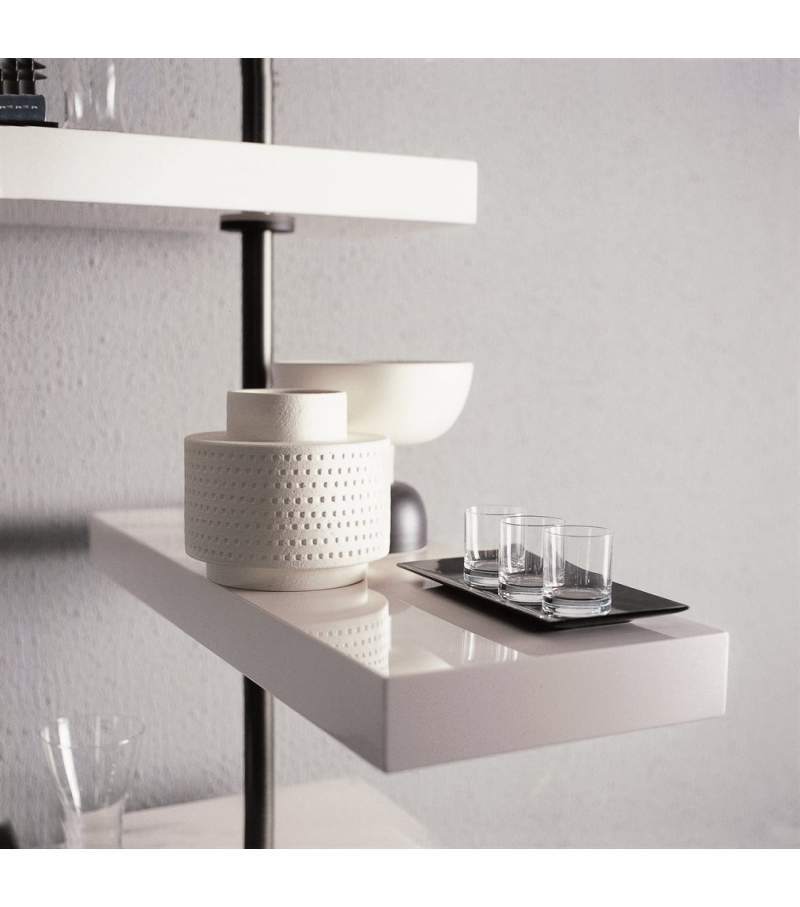Porada’s Modular Shelving System Stretches to the Ceiling

Hanging precariously (and sometimes off-center) on thin metal poles or, these simple sets of modular shelving surfaces and glass boxes seem to hover in the air. Better yet: some of the units spin on their axis, rotating to display books or other decorative objects.

Designed by Tarcisio Colzani, the Domino shelving systems work as singular towers in the middle of spaces but also operate well in tandem (or triplicate) as visual room dividers, semi-opaque screens and conceptual spatial separators.

Decorative but functional, the metal support poles allow for other modular attachments as well – such as televisions suspended in between sets of shelves. The catch? Small spaces might find it difficult to accommodate objects that rotate – these end up requiring more area total than a normal wall-hanging or corner shelving unit.

The Porada wall units collection comes in four styles: Domino, Domino Expo, Unique and My Suite, the latter of which is designed for walk-in closets. Each one comes in ten colors for the shelf surfaces, ranging from a dark walnut to bright white or yellow. The pole can either be off to one side or centered depending on your preferences, and you can choose the number of shelves, too.

You can also get the Domino as a ceiling-mount TV stand. “On the back side of the pole there are 8 holes for cables management. The post allows the wires to run from the floor through the bottom plate. The wires coming from the wall can be introduced into the post through the holes foreseen on it or on the board for fl at screen (plasma or LCD). The rotation of the TV-stand is blocked at 30° on the right and at 30° on the left to prevent dangerous torsions of the wires.”

About designer Tarcisio Colzani
“A self-taught carpenter and designer, Tarcisio Colzani developed his expertise in the field after leaving the Brera Art School in 1967. Beginning his professional career in the technical office of a furniture company, he gained extensive knowledge of materials and manufacturing techniques. His skills and knowledge as a furniture designer have resulted in Colzani working independently for numerous leading furniture companies including Besana, Confalonieri and Seven, as well as his long-term relationship with Porada.”




